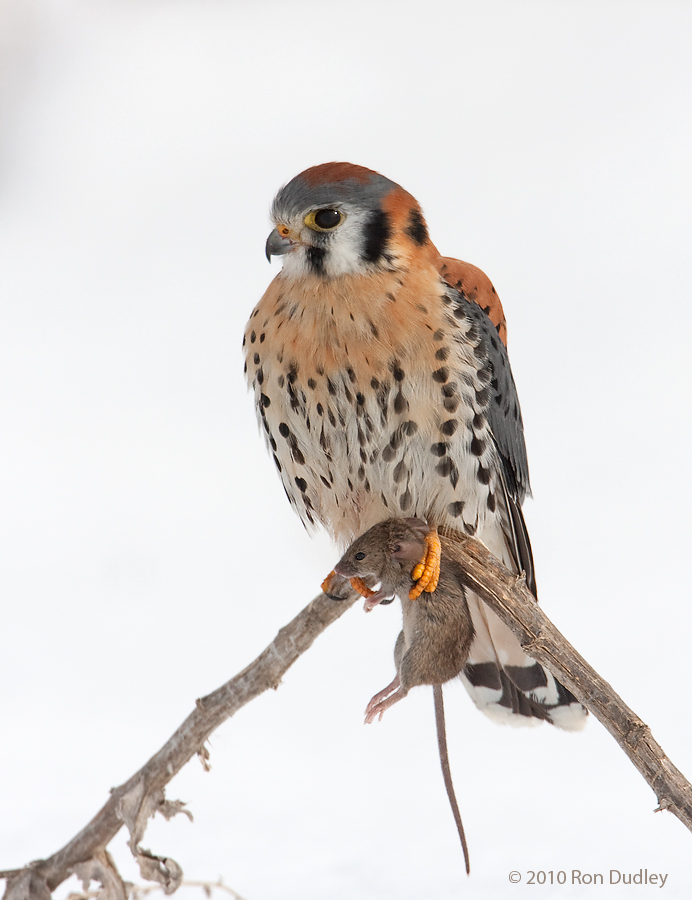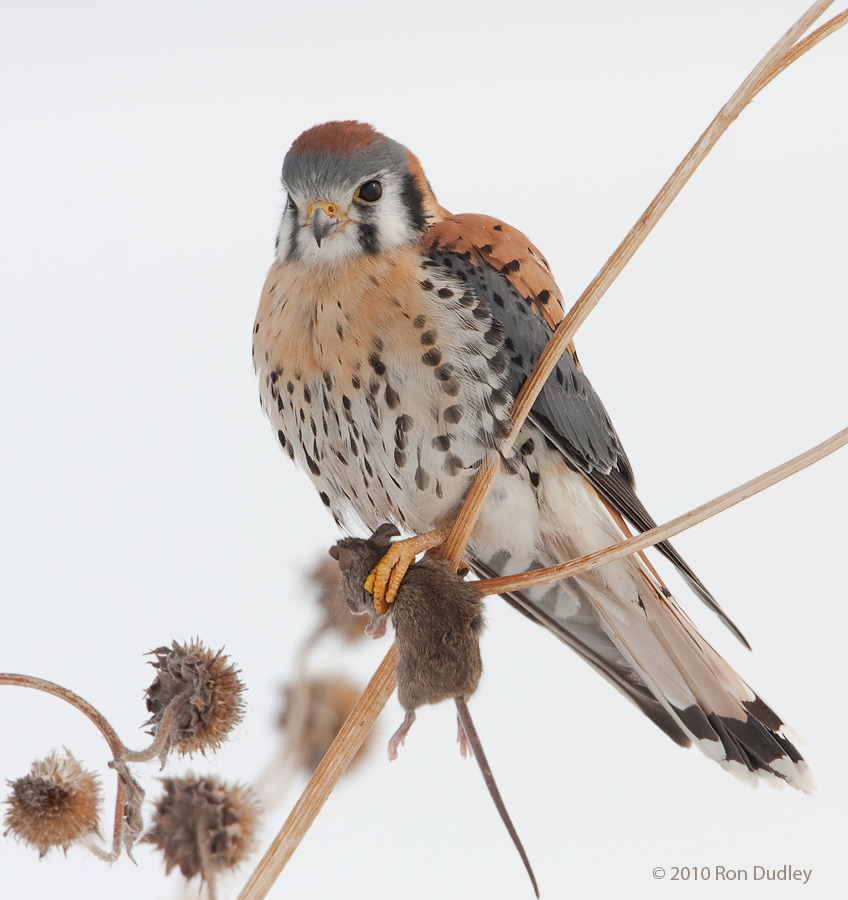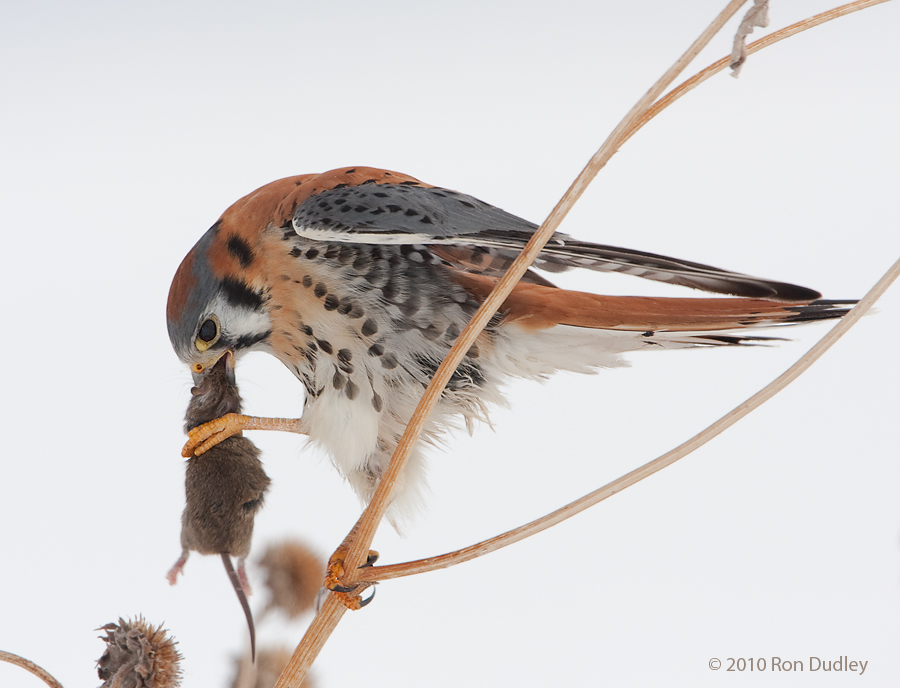I have watched American Kestrels consume their prey up close many times. Usually that prey has been a vole but occasionally it’s been a small bird or mouse. But until this day the prey had always been already dead when I arrived on the scene. It was cold and snowy when I spotted this male kestrel with a mouse (I was surprised it wasn’t a vole) that was still very much alive. As a side note I want to add here that this kestrel was not baited. Many photographs are taken of raptors when they’ve been baited by mice (they can be bought at pet stores) that have been provided as an enticement by the photographer. That was not the case here – I do not bait.
Male kestrel with live mouse
It was obvious that the mouse was alive because it was struggling slightly, its tail was twitching and its eyes were open. In my experience these birds often prefer a more stable perch than this while they eat their meal – something like a fencepost or pole that provides some kind of platform from which to eat. So I didn’t think he would eat the mouse here and I was right. He gave me time for a few quick shots and then flew off to another perch.
Kestrel on second perch
He didn’t go far however and I was able to approach him again. This next perch was also precarious to eat from because the wind was blowing and both perch and bird were swaying in the breeze. By this time the mouse was recovering somewhat and its struggling increased. The kestrel was obviously uncomfortable with the activity of the mouse.
The killing bite
So he decided to put an end to it and dispatch the mouse, which he did very quickly with several very rapid bites to the head. The mouse immediately quit struggling and had obviously expired within seconds. Kestrels, like all falcons, have a tomial tooth – sometimes called a falcon tooth. It’s a triangular-shaped, downward pointing projection on the upper mandible that fits into a corresponding notch on the lower mandible. They often use this tooth to kill prey by biting through the neck vertebrae and severing the spinal column. It appeared to me that this kestrel didn’t bite through the neck but I imagine that tooth would also be very effective on the brain – as would the pointed tip of the beak.
Immediately after killing the mouse the kestrel flew off – presumably to find a more suitable perch to use as a dinner table.
Ron





Once again, I’m torn between gratitude that the “Cute Killer” has found another meal and terrible, terrible sympathy for the poor mouse! (As you can probably guess, I was never meant to be a farmer…a bad, bad fit!!!)…I can’t tell you how many hours I spent as a kid, in the barn, trying to untangle flies from spider webs, or how many mice I tried to rescue from the cats, etc…
Great work, thank you!
I love these images. We see them here in South Texas and I never can get excellent details like this in my photos!
Wonderful close up Kestrel images and story. They really are a colorful bird, thanks for posting.
Thanks Rich. Can’t remember for sure how close I was to this bird but I just went back and checked and the “killing bite” image in this post is cropped to 71% of the original image so I was pretty close, especially for a kestrel. The shot was taken on Jan 18 so it was probably very cold and the kestrels out there get much “stickier” in intense cold.
I’m surprised you could document this so well. How close were you for these excellent images?